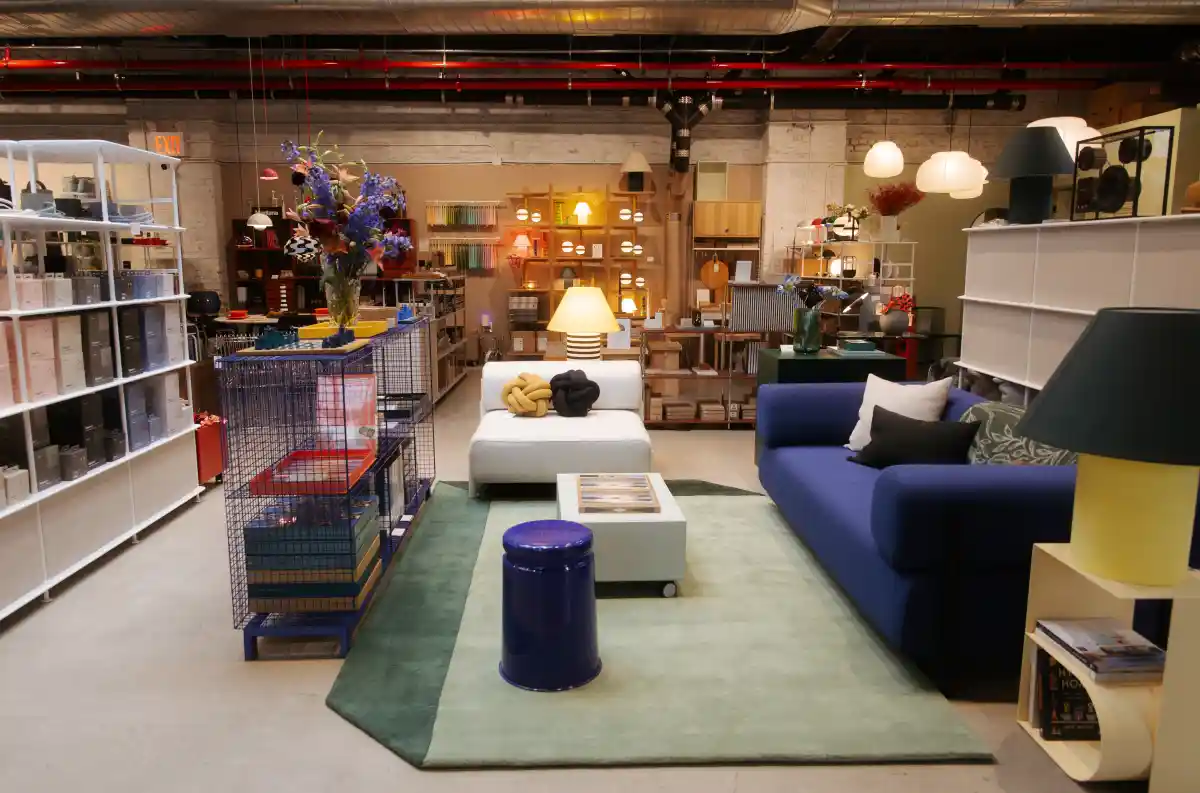Walkabout: Fly Me to the Moon, Part 2
Coney Island was the largest and most famous entertainment center in the world. It was composed of three major amusement parks, which in turn were surrounded by the rides and attractions of dozens of independent operators and vendors. All of them faced the beach and the sea, the original attraction for millions of hot and…

Coney Island was the largest and most famous entertainment center in the world. It was composed of three major amusement parks, which in turn were surrounded by the rides and attractions of dozens of independent operators and vendors. All of them faced the beach and the sea, the original attraction for millions of hot and overworked New Yorkers, crowded into an ever-growing and congested city. Last time, I told the beginnings of the story of Luna Park, the brainchild of two talented Midwesterners, both bitten hard by the show-biz bug. Frederick Thompson and Elmer “Skip” Dundy had invented a hugely popular attraction called “A Trip to the Moon”, which was the top attraction at the 1901 Pan American Exhibition in Buffalo, NY. Steeplechase Park owner George Tilyou bought the ride, and had it and the partners brought to Coney Island in 1902. It was only a matter of time before these go-getters got their own park, and in 1903, Luna Park opened to great success. Thompson and Dundy had bet their last dime on the success of their new park, and their gamble paid off. By the end of 1903, with not even a year of operating, the men had paid off their loans, and were swimming in money.
Frederick Thompson and Skip Dundy were a complementary pair of partners. Skip Dundy was more of a dreamer. He loved the circus most of all, and as a young man had dreamed of running away to join. All of the animal acts and other traditional circus acts playing in Luna Park were his idea and his baby. He also was the financial man. Thompson, who was ten years younger, and a cutthroat deal-maker and showman, took care of the rest of the entertainment. He had a background in draftsmanship and architecture, and designed the overall look of the park, its layout, and was responsible for many of the new rides and attractions. There wasn’t much he wouldn’t do, or many circumstances he wouldn’t exploit in order to bring people and their wallets into Luna Park. As told last time, he even executed an elephant in order to bring people into the park.
Yet his partner, Skip Dundy loved elephants, or so it seemed. The park was built on the site of the old Elephant Hotel, a Victorian folly of a building shaped like a huge elephant. It towered over the Boardwalk, and had rooms for rent, as well as a popular observation deck from which one could look out over the ocean, up and down the beach, and across Brooklyn. Like many buildings in Coney Island, it burned down in a spectacular fire in 1896. When workers were clearing the land to build Luna Park, they discovered the remains of one of the hotel’s enormous feet. Dundy considered that good luck, and soon had one of the largest elephant herds in captivity, supposedly the largest herd in the world. They moved heavy objects around the park, including the original “Trip to the Moon” extravaganza. They were also popular family attractions, and elephant rides were a staple of the Luna Park experience.
A fantastic set called the “Streets of Delhi” was built for the summer of 1904, which featured the March of the Durban of India, with thousands of “real Eastern people” in fantastic and elegant costumes, elephants, camels, dancing girls, drummers, and regiments of soldiers. The recreation of the march was so realistic and beautiful that over four million people saw it that summer, in groups of 5,000. The extravaganza lost money because of production costs, but gained much more than it lost in bringing people to the park, and having them stay and spend money on everything else. Dundy also had a special “Shoot the Chutes” slide rigged up so that he could send four elephants down the slides to a big splash in the pool below. The audience loved it.
The true philosophy behind the success of Luna Park was simple: change. Frederick Thompson once stated that visitors to his park wanted entertainment and escape. He said, “Everything must be different from ordinary experience. What is presented to them must have life, action, motion, sensation, surprise, shock, swiftness or else comedy.” The partners set out to provide all of that, and more. No ride lasted in Luna longer than a year, if it wasn’t generating a profit. Change was everything. The original “20,000 Leagues under the Sea” ride, which helped open the park, was scrapped in 1905. It was replaced by a smaller, but much cooler indoor scenic railway ride called the “Dragon’s Gorge”, which boasted 10,000 lights in its grand arched entryway alone, which illuminated a huge waterfall that the train went behind, leading them on to a very steep and exciting turn through the great waterways of the world, including the final waterway, the River Styx.
Thompson had designed his Luna Park with a vaguely Oriental Turkish flavor, with hundreds of brightly lit minarets, towers and turrets. In 1907, he came up with the new logo for the park, a crescent moon with pinwheels in red and gold. This symbol was placed on the entrance, and lit with thousands of lights. The 1907 season also saw a new Ferris Wheel, and the debut of the Helter Skelter ride, a long winding slide for adults, and the Tickler, a very popular ride that basically allowed the riders in a round car to become balls in a giant pinball machine, bouncing off the walls as they made their way through the maze. You may think that you’ve heard about these rides in other parks, and that would be correct. All of them had a Shoot the Chutes, a Helter Skelter and a version of the Tickler. Luna Park was not the first. Imitation was indeed the most sincere form of flattery. And money making.
In 1907, alone, Luna Park was a small city unto itself. It employed over 1,700 people, and it’s over 1,300,000 electric lights cost more to light than a small city. The electric bill was $5,600 a week. It had its own wireless telegraph and internal telephone system, with local and long distance service. By the end of the 1907 season, over 30,000,000 people had visited Luna Park, since opening day in 1903. It was well past time for disaster to strike, and sure enough, it did.
While Dundy and Thompson were great business partners, they were both great enablers, as well. With huge success came huge vices. Dundy was a compulsive gambler, often betting huge stakes in poker games. Thompson was often called upon to lure his friend away from the table when the stakes got too high. Dundy was also a huge ladies’ man, and had to be separated and brought back from more than one messy affair of the heart. On the other hand, Thompson was a huge spender, and an alcoholic. He wasted money like he had printed it, and was often found drunk as a lord at the bar of some Coney Island dive. Dundy would often come in, snatch the glass from Thompson’ hand, and fling it to the floor, then drag him out of there.
He wasn’t around to grab Thompson from the grip of matrimony, however. In 1906, Frederick Thompson married an actress named Mabel Taliaferro. He immediately got it into his head that he was going to make her a star, suddenly began to spend all of his attention on her show biz career, and began neglecting the running of Luna Park. Without Thompson around, Skip Dundy was left running the park himself, and was also left to his own more self- destructive devices. He began to burn the candle at both ends, and in February of 1907, died of pneumonia and heart problems. Thompson was on his own.
He began to change the attractions at Luna Park with rapidity, each new ride more elaborate and expensive than the next. Some of them were downright bizarre to today’s tastes, and featured a casual and popular racism of the time, with one ride culminating in a “greaser” being burned at the stake in a frontier scene, and another depicting southern plantation life, with real live darkies in the fields picking cotton. This one also ends with a paddle wheel ship being burned. A new “Trip to Mars” replaced the “Trip to the Moon”, this one boasting a giant 100 passenger airplane that takes passengers up through the atmosphere, fighting biplanes and storms, to Mars. It cost $50,000 to build. There were more low-brow rides as well, including an improved Tickler, as well as circus attractions, elephant rides, and other water rides.
Thompson tossed money around like he had a bottomless well, both in running the park, and in his personal life. He spent a million dollars a year on the park, for a four month season. Personally, he handed money out like business cards, such as when he awarded the captain of his yacht $38,000 for winning a race, a thousand dollars for each second the record was broken. In 1910 money, that was more than most people made in several years of work. In 1911, his marriage to Mabel broke up, and by 1912, he was flat broke. He had over $600,000 in debt, and his creditors took Luna Park.
Next time: the post-Thompson and Dundy years, after 1912. The park survived, but no one understood the entertainment business like they did, and it just wasn’t the same. The end of the story of Coney Island’s famed Luna Park on Thursday. For more photos of Luna Park, see my Flickr page.
[Brownstoner: Fly Me to the Moon, part 1]








MM, wow, a lot to digest with this essay. The thing that strikes me is how Americans always had a genius for popular entertainment. Something that is still one of our principal industries and exports (movies, music, video games).
I have not been to Coney Island in over a year and have not seen the new Italian-made rides up an running. I hope the new attractions are successful and can revitalize the area a bit. The place cannot keep living on past glory.
MM, wow, a lot to digest with this essay. The thing that strikes me is how Americans always had a genius for popular entertainment. Something that is still one of our principal industries and exports (movies, music, video games).
I have not been to Coney Island in over a year and have not seen the new Italian-made rides up an running. I hope the new attractions are successful and can revitalize the area a bit. The place cannot keep living on past glory.